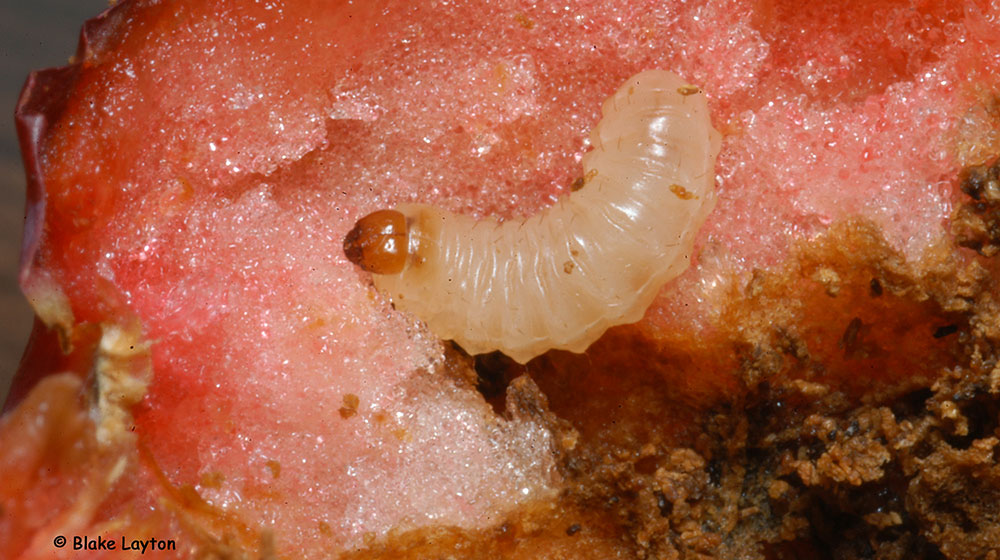Plum Curculio, Vol. 2, No. 1
Related News
October 1, 2013
September 10, 2013
June 24, 2013
June 20, 2013

Order: Coleoptera
Family: Curculionidae
There’s a worm in this peach! Well, actually it’s a grub. Plum curculio is the most common insect pest of home-grown peaches and plums. If there’s a worm in the fruit, it is probably a plum curculio. Adult plum curculios are small weevils, but adults are skilled at avoiding detection and are rarely seen. Plum curculios overwinter as adults in leaf litter, emerging in the spring to fly back to trees. As soon as petals begin to fall and small fruit is available, female curculios chew crescent-shaped punctures into the fruit and lay their eggs. The eggs hatch into legless white grubs that feed inside the fruit, reaching a length of about 1/3 inch long when fully mature. Mature larvae exit the fruit and drop to the ground to pupate. There are two to three generations per year, and attacks continue until fruit is ripe.
Control: This is one pest that you really need to control if you are serious about growing peaches or plums. Malathion is the most effective treatment for home orchardists to use against plum curculio. If you purchase a premixed home orchard spray, be sure it contains malathion. Begin spraying promptly at petal fall by applying a series of two or three weekly sprays; increase spray intervals to 10 to 14 days for summer cover sprays. If you are going to spray for insects, then you definitely want to control diseases as well. Include appropriate disease control products according to recommended spray schedule. Shorten spray intervals during rainy periods. Stop sprays in time to honor the preharvest interval, which is seven days for malathion on peaches. Imidan (phosmet) is a more effective curculio control alternative for commercial producers and hobby orchardists with large numbers of trees. There are no good organic treatments for this pest.
See Disease and Insect Control for Homegrown Peaches and Plums for more information. Commercial producers should refer to the Southeastern Peach, Nectarine and Plum Pest Management and Culture guide.
Blake Layton, Extension Entomology Specialist, Mississippi State University Extension Service.
The information given here is for educational purposes only. Always read and follow current label directions. Specific commercial products are mentioned as examples only and reference to specific products or trade names is made with the understanding that no discrimination is intended to other products that may also be suitable and appropriately labeled.